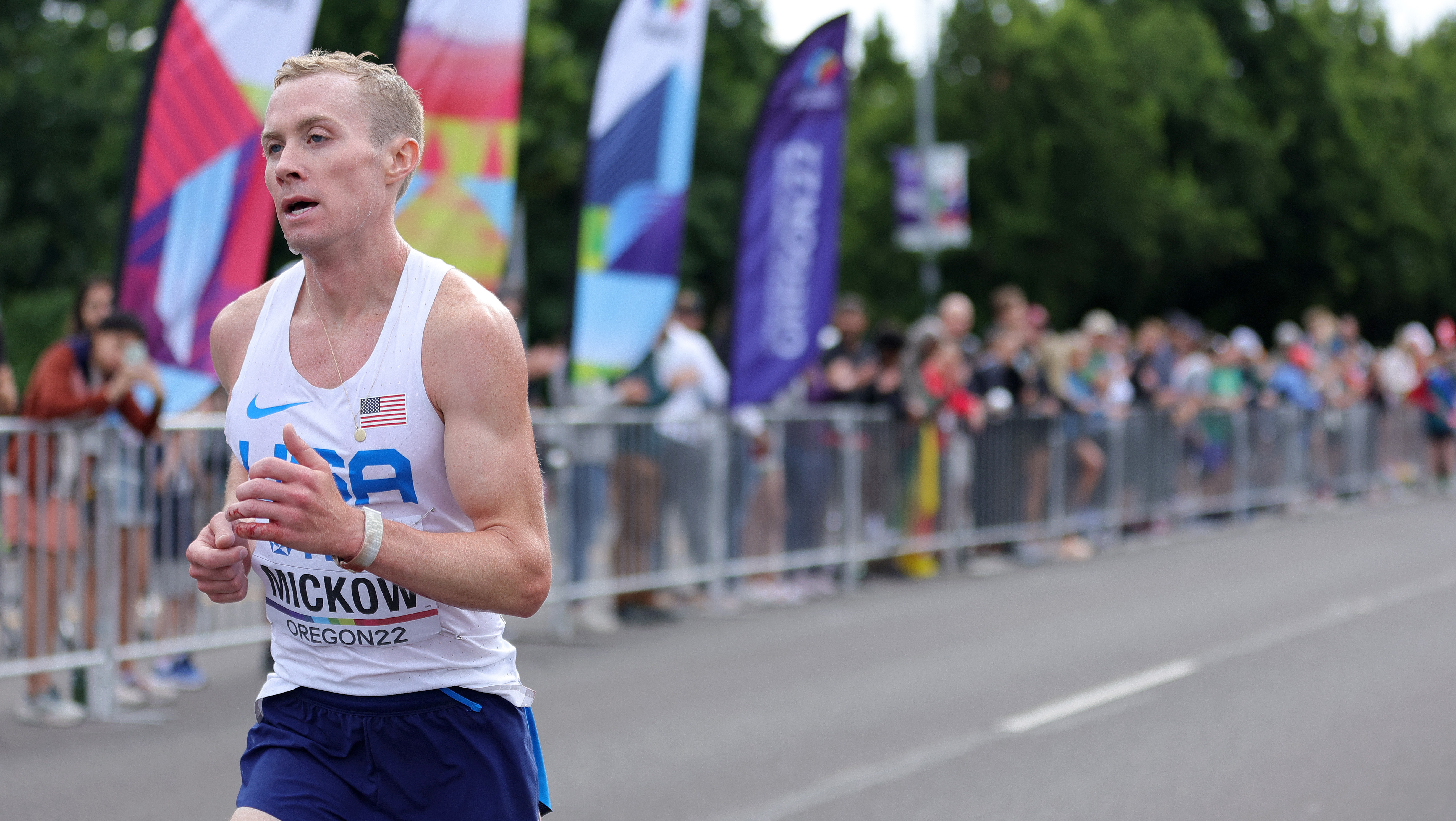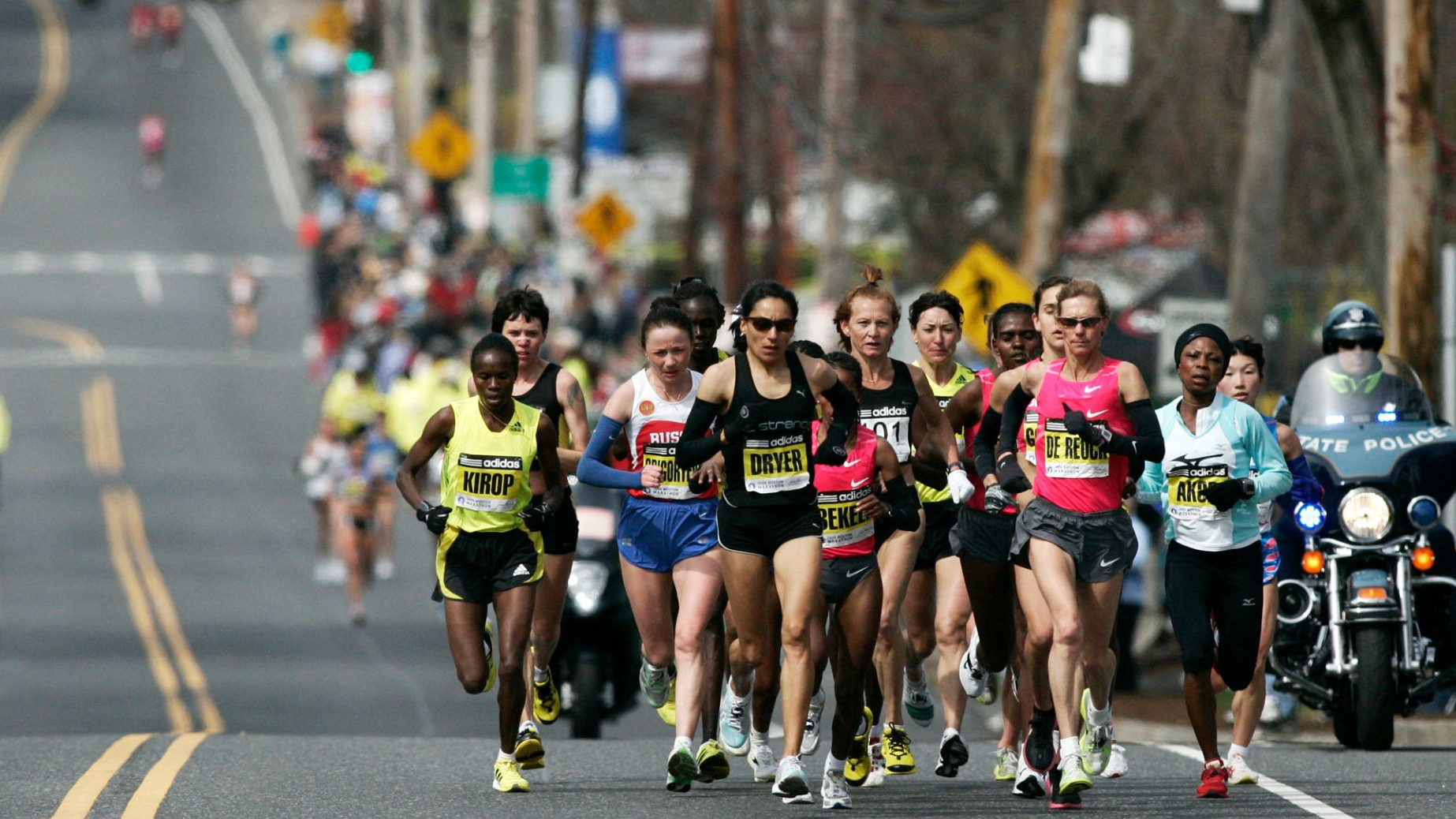
While amateur runners will never have the time or support to replicate the marathon training of elite runners, there are always fascinating insights to draw from how pros train for big events like the Boston Marathon.
Sports scientist Derek Dalzell is the senior manager for consumer education at sports watch brand Coros, and has been analyzing the data of some of Coros’s sponsored elites ahead of the 2023 Boston Marathon, in particular US runner Colin Mickow’s training.
We spoke to Dalzell to see what amateurs could take from Mickow’s approach to improve their own marathon training. The first insight isn’t all that surprising—elite runners run a lot—but interestingly they don’t really hit top gear and focus on their event until they are close to race day.
“One of the big takeaways is the volume,” says Dalzell. “The volume that they’re training at is exceptional. It’s 131 miles a week. Their aerobic base, their endurance, is massive. But then the big thing that I think a lot of amateurs don’t understand is that they don’t really start running hard until four to eight weeks out from the race. It’s a specific block.
“If you look at [Mickow’s] training intensity 12 weeks out, eight weeks out and four weeks out, you can see the closer he gets to race day, the more miles he’s putting in at race pace.”
The first practical application for amateurs is not to overdo it at the start of marathon training.
“A lot of amateurs are just getting into it and have this new motivation. They go out and are like ‘I’m gonna push myself, I’m going to get in shape within the next two to four weeks’,” says Dalzell. “That can be a bad thing, because it’s not going to make running easy. Ultimately, you’re not going to want to keep doing it because it’s not sustainable.”
One way to make racking up a lot of miles in marathon training achievable is to ensure that your easy runs really are easy, with your heart rate remaining in your lower heart rate zones, no matter how slow that means you run.
“One thing we can take away from these pros is that they run in their easy training zones,” says Dalzell. “They run a lot of miles in zone 1 or their fat-burning zone, and amateurs would be shocked at how easy or how slow that would be for them. A lot of people aren’t running slow enough.”
A lot of people aren’t running slow enough
Once you’ve built that base fitness through easy running, stepping up to start doing more work at speed becomes easier.
“A lot of amateurs never get to that point because they don’t go through the proper process,” says Dalzell. “They’re too tired and they haven’t established the aerobic base needed to sustain that level of training.”
One thing that Dalzell picked out about Mickow’s Boston Marathon training was the high amount of time spent at race pace in later weeks.
“Over the last four weeks, [Mickow] spent 56% of his time at race pace, which is a lot,” says Dalzell. “If you look at 12 weeks prior to race day, 70% of his time was easy, and only 30% was race pace. So the closer you get to race day, the more you want to specifically train that system to be prepared.”
Of course you can’t keep hammering out race pace runs right up to race day. A taper period ahead of a marathon is essential for runners of all levels.
“Each person’s individual [requirements are different], but if somebody’s been training properly, a taper is usually somewhere between eight to 14 days,” says Dalzell. “Mickow started his taper on 6th April, so 11 days out from Boston.”

While most of the marathon training that elite runners do for Boston will apply equally to any city event, the Boston Marathon route does have some well-known features, such as the Newton Hills, for which pros make specific preparations.
“It’s actually a lot of downhill,” says Dalzell. “There are uphill sections, that’s the famous stuff, but there’s a lot of downhills as well. We just interviewed [former US marathon champion] Emma Bates and she [told us she] has spent a lot of time training downhills in preparation for Boston, because she doesn’t want her quads to seize up at mile 22 or 23. It is a net downhill race.
“Everybody focuses on the uphills, and don’t get me wrong—you have to be able to surge above your threshold on the uphill to stay with the pack. But if you don’t have your legs trained for downhill running as well, they’re gonna give out at a certain point.”
One thing that elites don’t tend to do in their marathon training is short, all-out intervals well above their threshold pace.
“Maybe if there’s something wrong with their turnover or their gait, they’ll do some 400s or 800s,” says Dalzell. “But a lot of elite marathoners, they’re not doing 400m repeats on the track. They’re building volume and their aerobic base at an easy level, then they might go up to do some above threshold very sporadically. If you look at Colin’s breakdown of zones, 98%-99% of his training is threshold or below.”
One last point that Dalzell highlighted about elites in comparison to amateur runners was cadence—the amount of steps you take per minute.
“When an amateur starts running, for whatever reason, they settle in somewhere between 155 to 170 steps per minute,” says Dalzell. “Research says that each person has their own specific maximum efficiency of cadence, but it’s usually somewhere above 180. So a lot of amateurs are just not turning their feet over fast enough.
“When you look at the elites, like Colin Mickow, Eliud Kipchoge, Emma Bates, they’re generally more like the 190 to 200 range. So not not only is their stride length longer, but they’re turning their feet over faster, almost 20 to 30 times more a minute than most amateurs do.
“The takeaway there is you don’t have to run faster to increase your cadence. It’s a neurological pathway—it’s basically your brain sending a signal to your legs to pick up your feet. You can practice this on your easy runs. And the more you do, the more efficient you’re going to become.
“If somebody’s not going to run 130 miles a week—which nobody’s really going to do, right?— but they want to improve as a runner, I will basically tell them ‘slow down, build your base, and increase your cadence on all runs’.”







